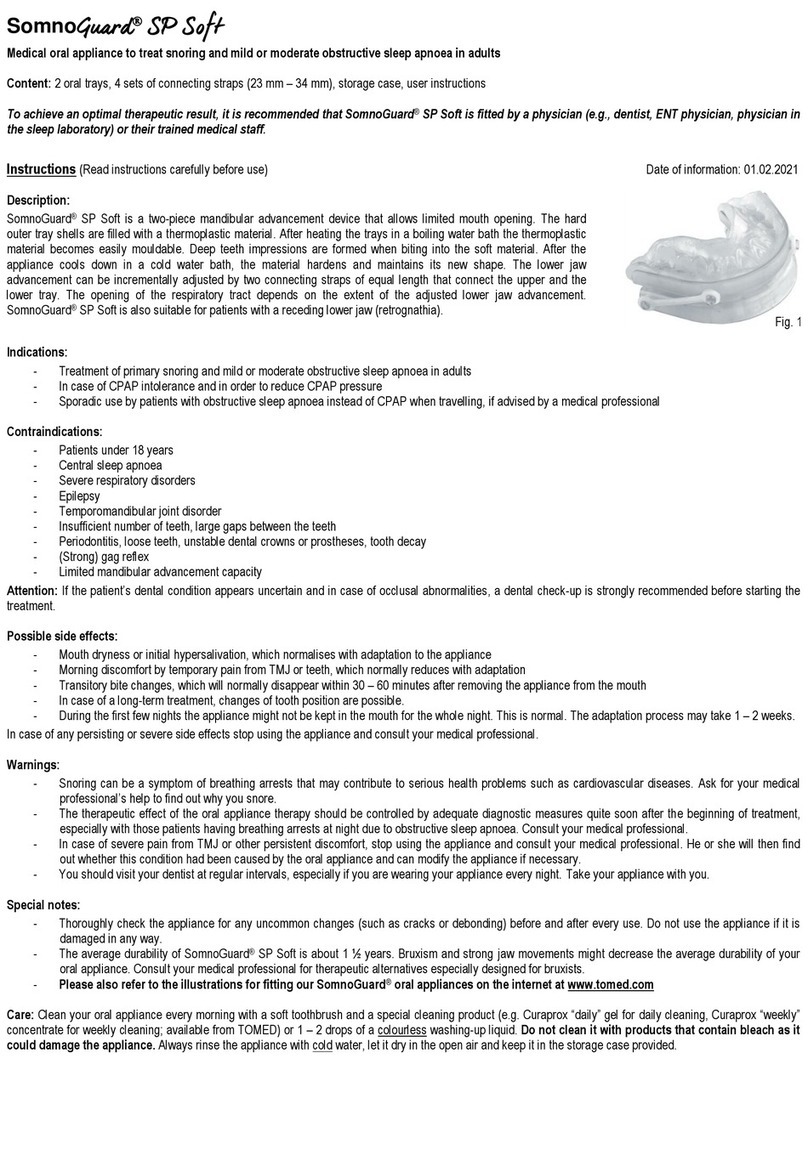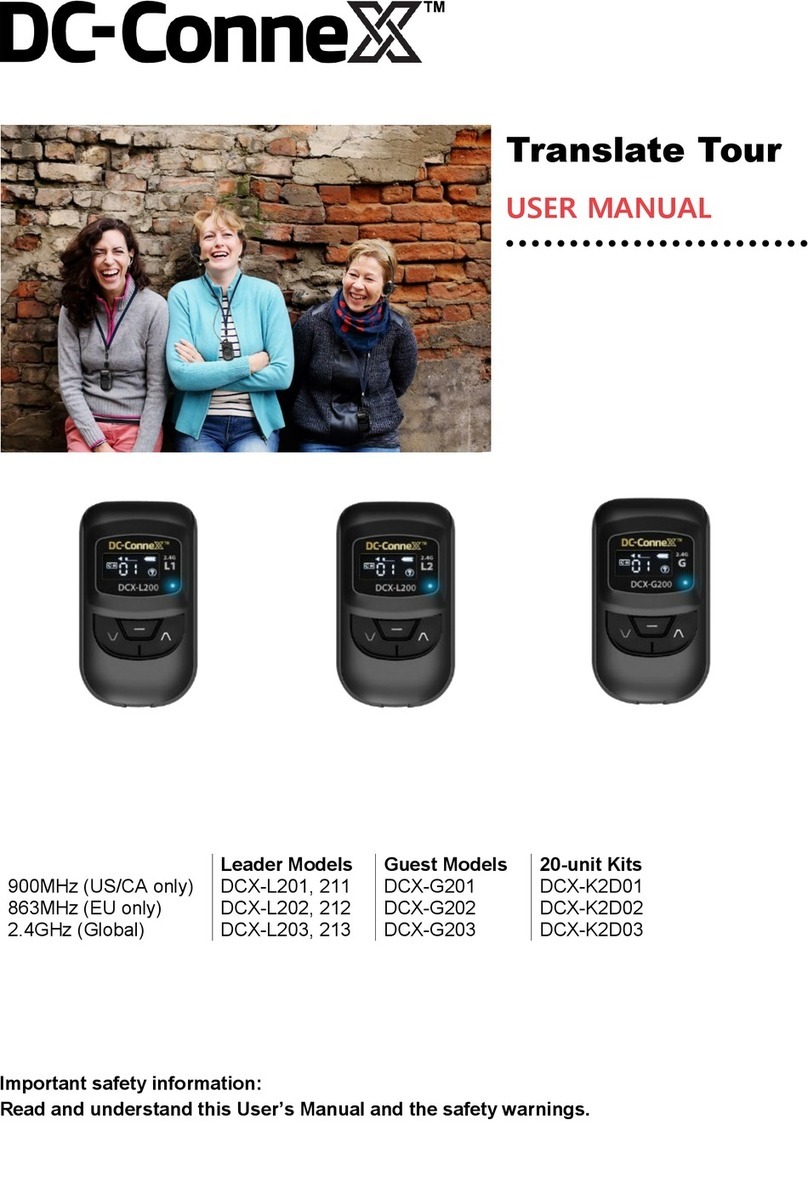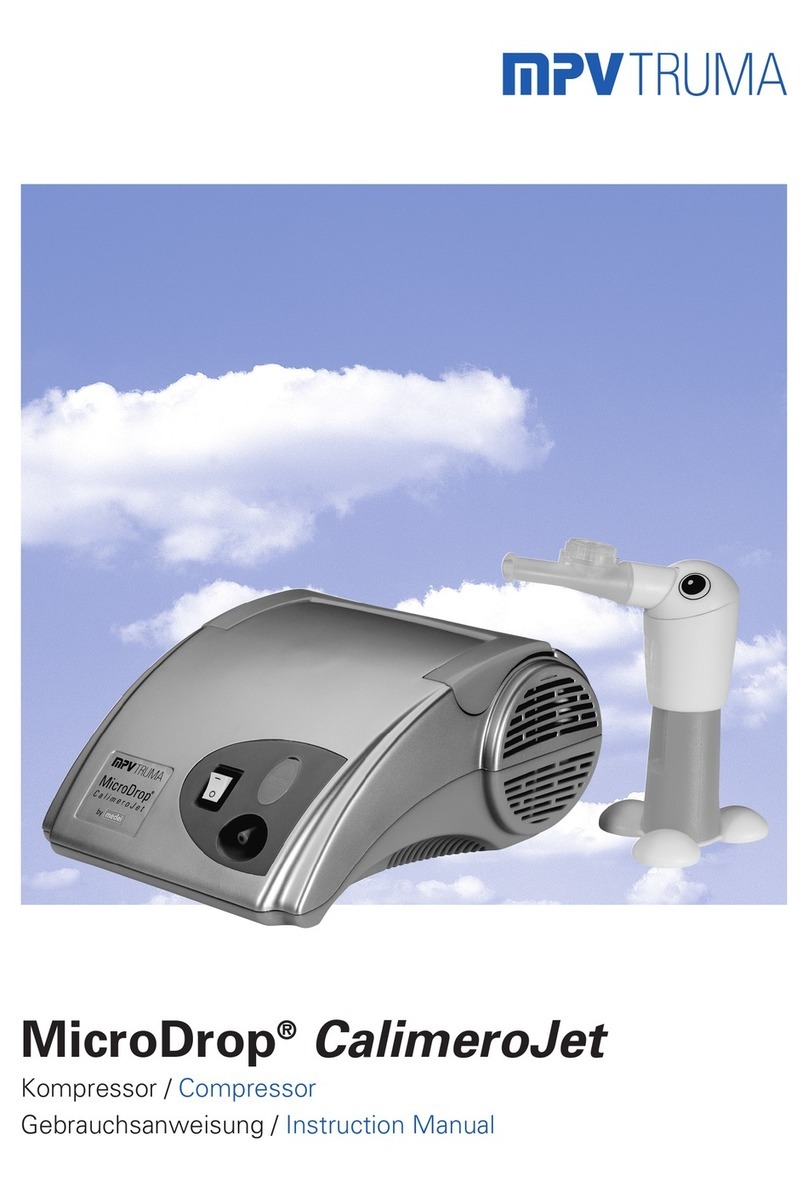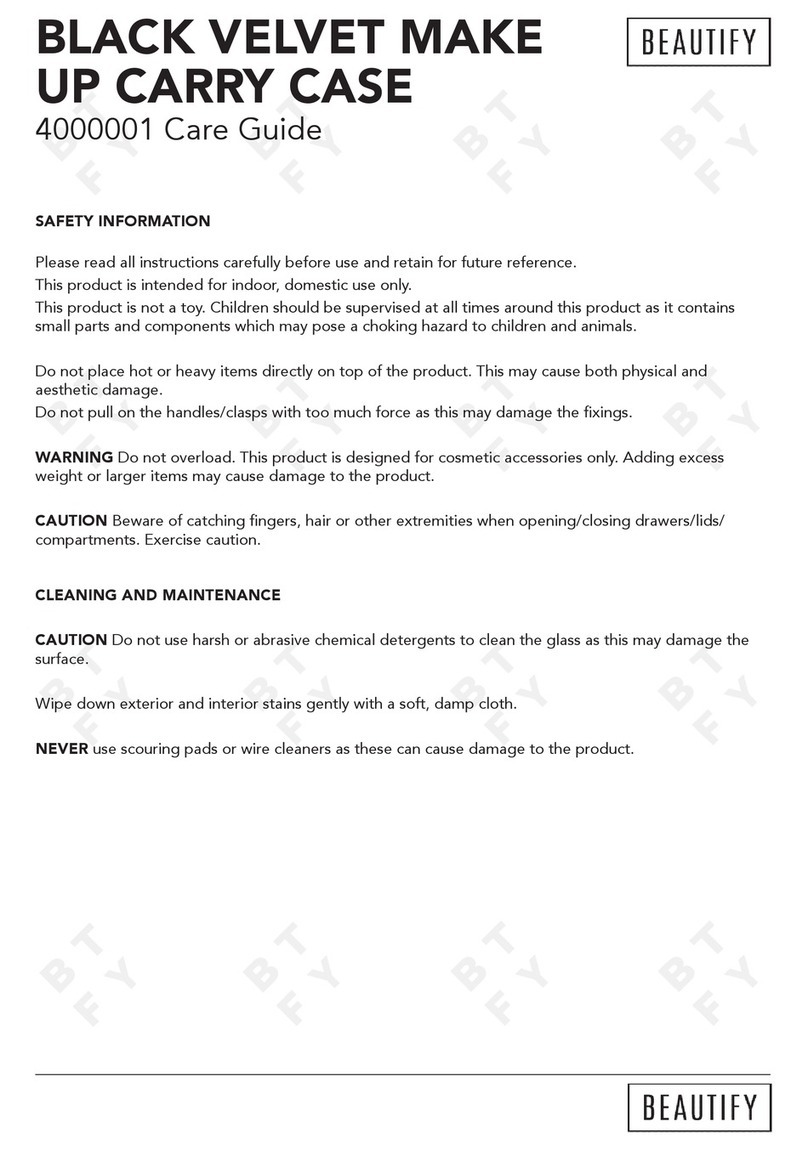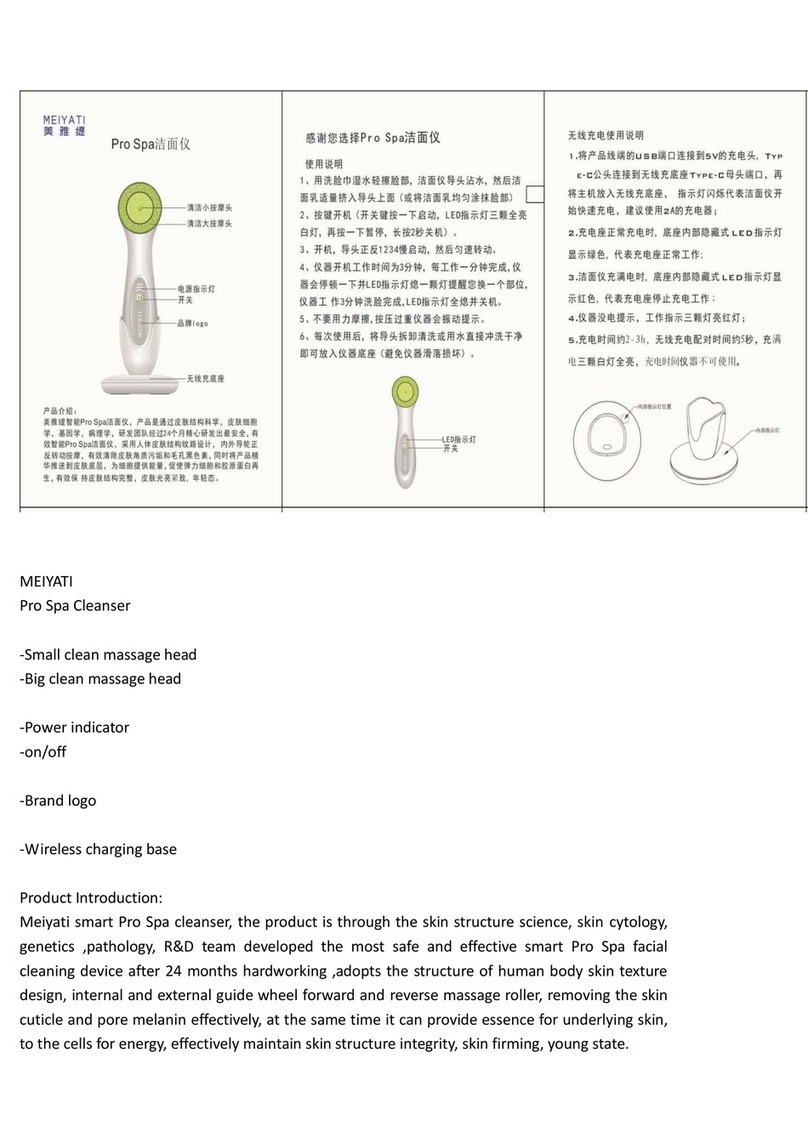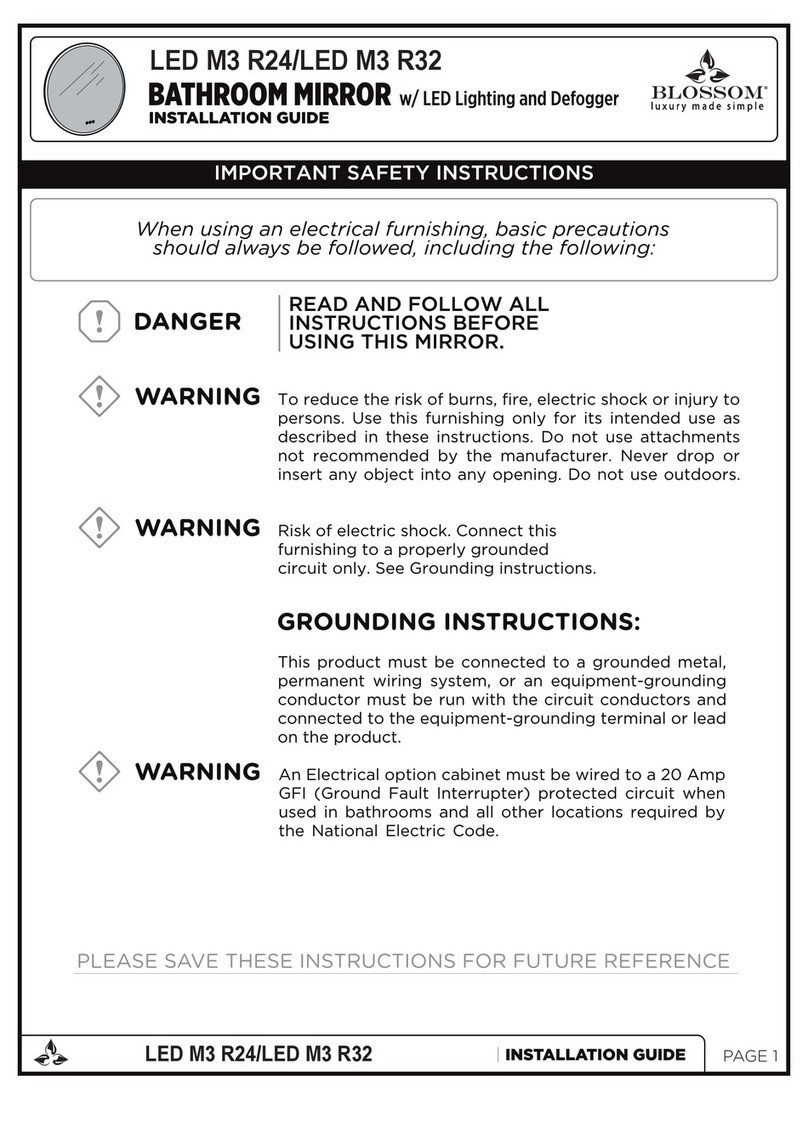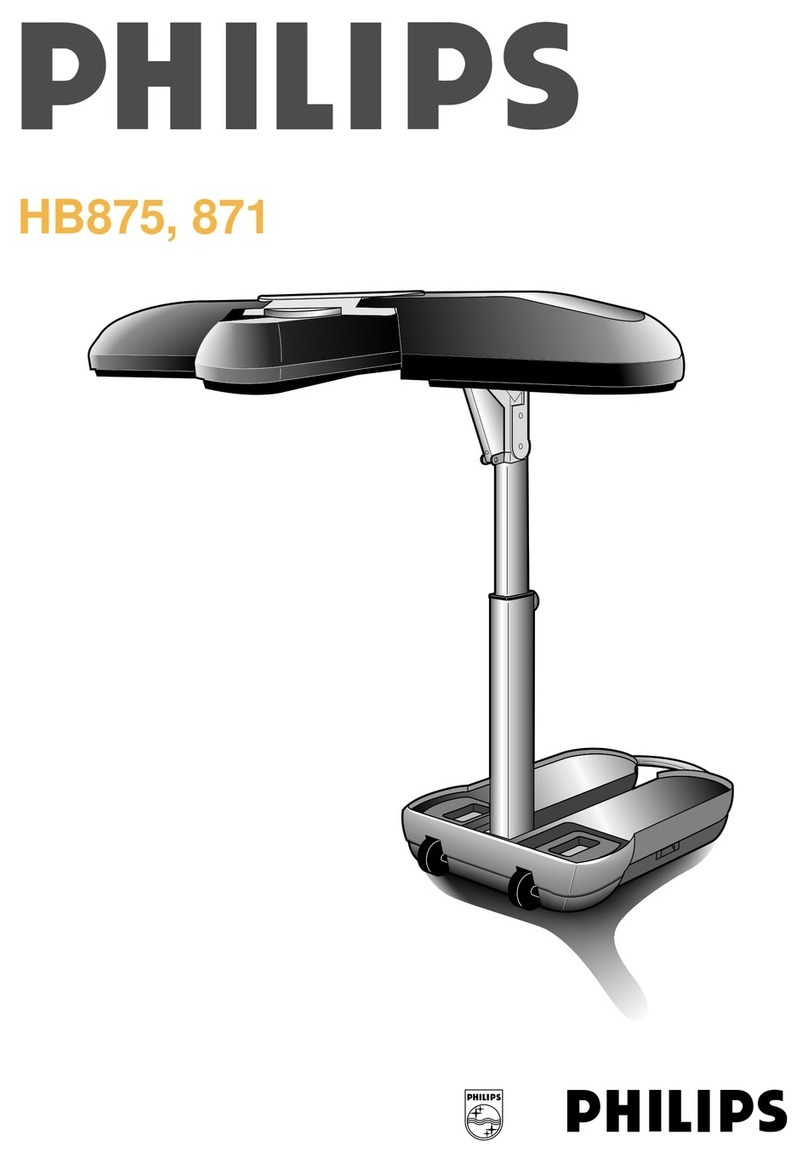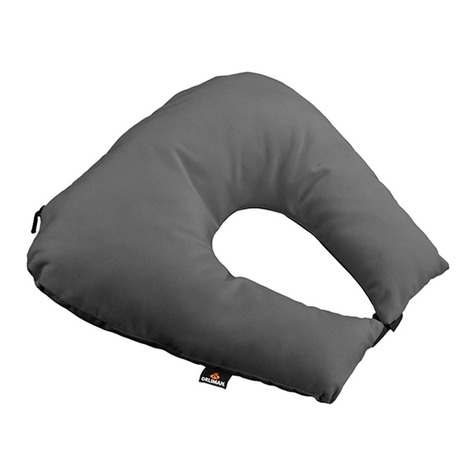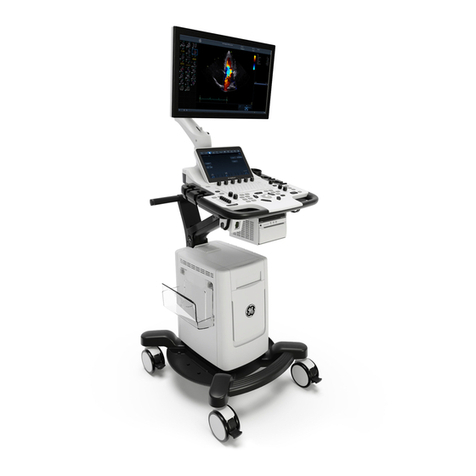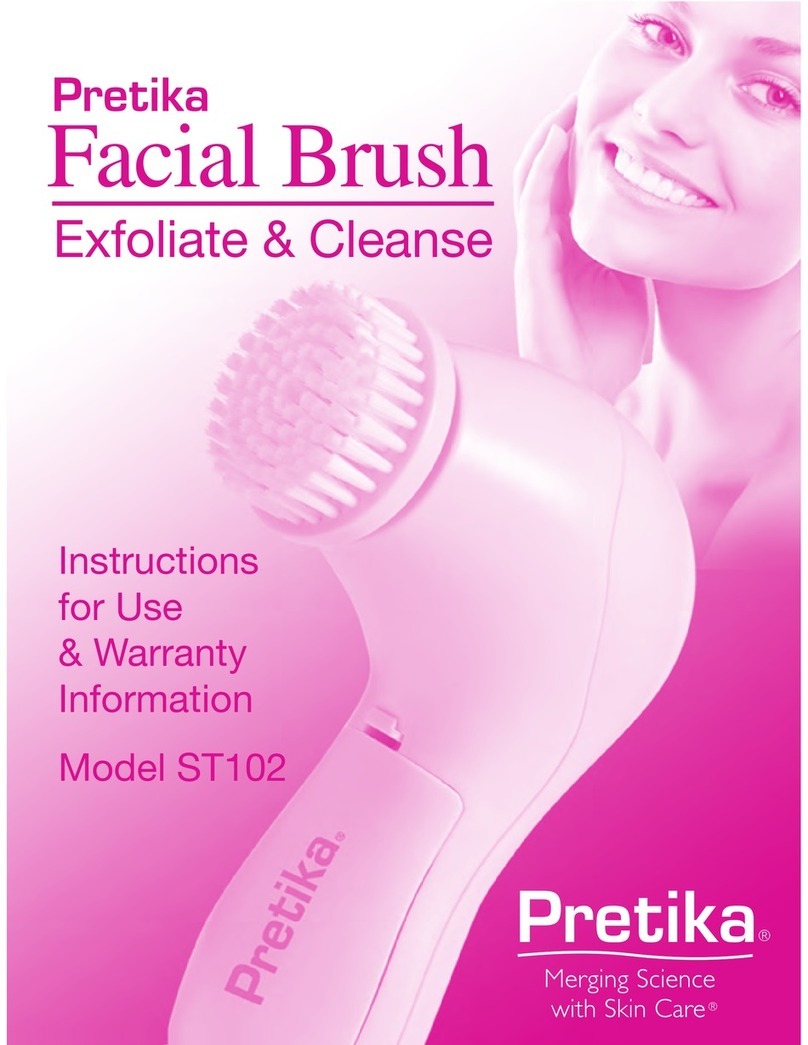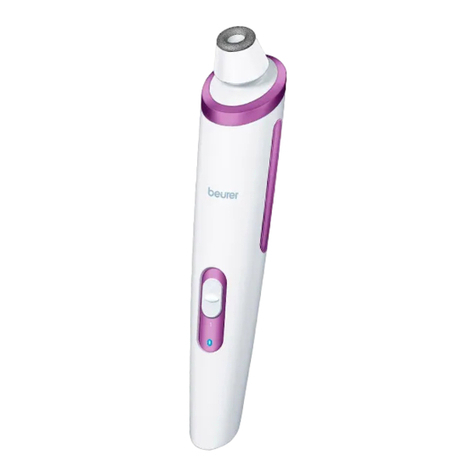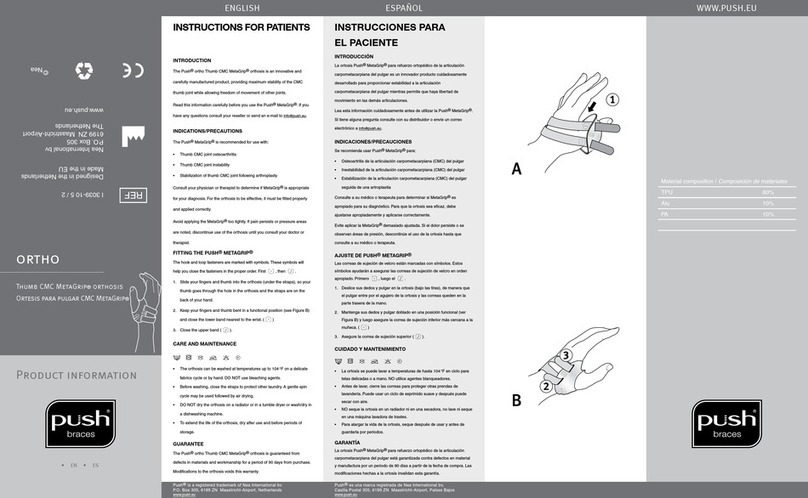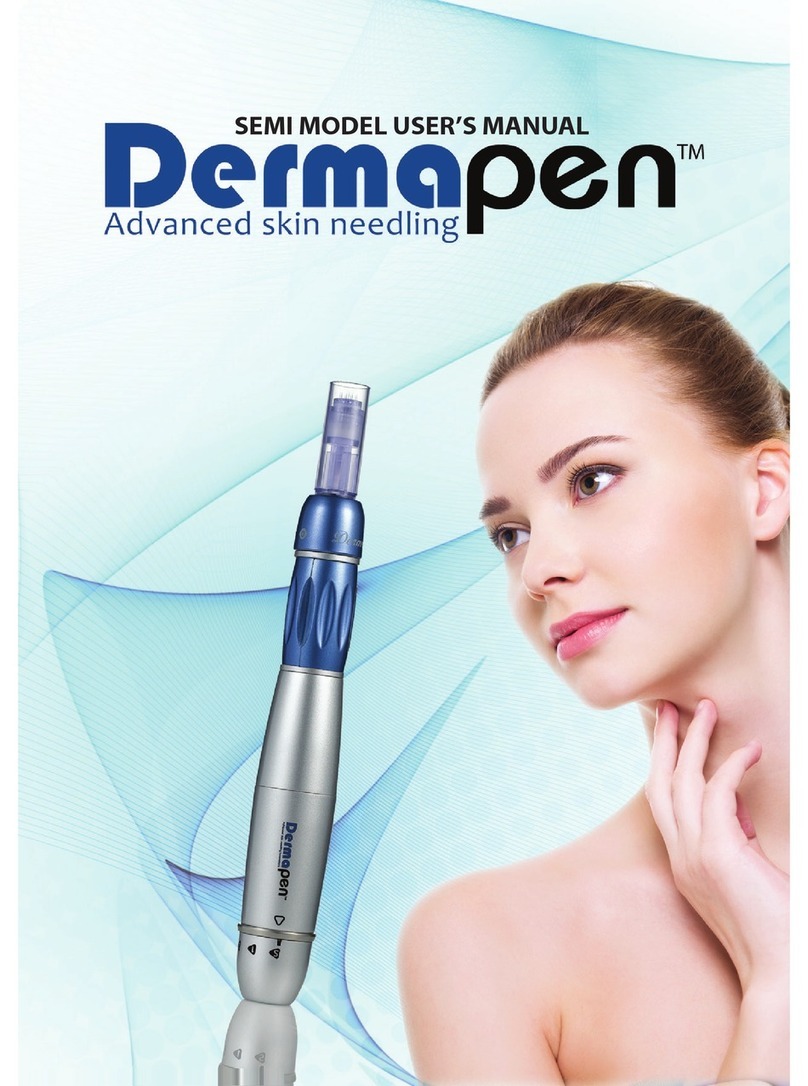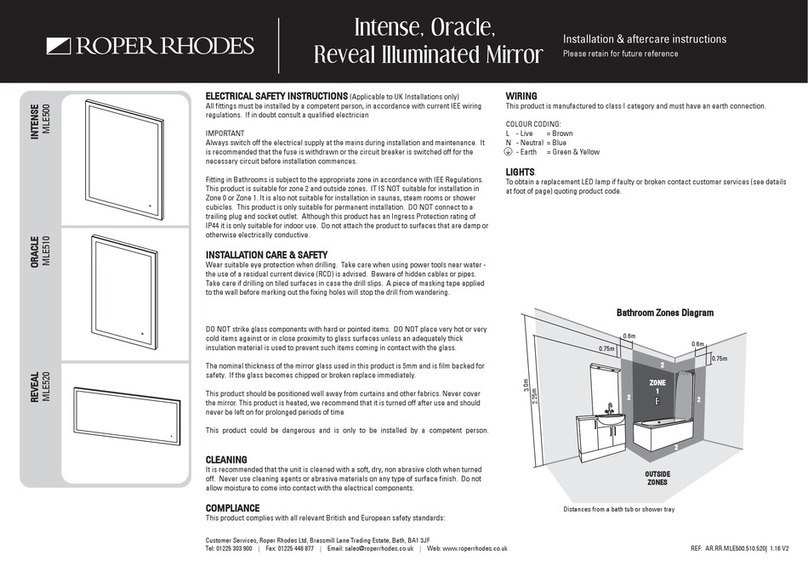Tomed SomnoGuard User manual

SomnoGuard®and SomnoGuard®2.0
Medical oral appliances to treat snoring and sleep apnoea in adults
Content: monobloc mouthpiece, filler material, wooden spatula, storage case and user instructions
It is recommended that the SomnoGuard®mandibular advancement devices are fitted by physicians (e.g., ENT doctors, sleep lab doctors or
dentists) or their trained medical staff. A video CD-ROM entitled "SomnoGuard®- Fitted by an Expert" is available from Tomed or your local
supplier showing the major steps in fitting the SomnoGuard®and SomnoGuard®2.0. The CD runs on all PCs using Windows.
Instructions (Read instructions carefully before use) Date of information: 8 July 2009
Description:
SomnoGuard®and SomnoGuard®2.0 are prefabricated one-part mandibular advancement devices made from thermoplastic copolymers. The upper part of
the oral appliance is characterised by a notch (see figures 1 and 2 on the box). When heated in a hot water bath the oral appliance becomes soft and
mouldable and is then fitted to the teeth of the upper and lower jaws. Once the appliance has shortly cooled after fitting, it will show a distinct impression of
the teeth over the whole of the mouthpiece (see figure 2 on the box). SomnoGuard®2.0 differs from SomnoGuard®because of a 1.5 mm thickened molar
biting zone on each side and an increase in the height of the molar side wall by 1 mm. As opposed to the classic SomnoGuard®use of the filling strip can
thus be avoided when SomnoGuard®2.0 is used by patients with a "deep bite”. An opening in the front part of the mouthpiece allows you to breathe through
the mouth (if necessary) in an emergency situation. However using the 2-part appliance “SomnoGuard®AP” enables you to breathe through your mouth
whenever you need to do so.
Indications:
- Primary snoring and mild to moderate obstructive sleep apnea in adults
- Sporadic use by patients with obstructive sleep apnoea instead of nCPAP when travelling according to the advice of their medical professional.
Contraindications:
If any of the following conditions exist, seek advice from a medical professional before using this appliance:
- Central sleep apnoea
- Mandibular joint disorder
- (Strong) gag reflex, larger gaps between the teeth, unstable dental crowns, decay, parodontosis
- Limited mandibular advancement. Patients with sleep apnoea should be able to extend their lower jaw forward at least 7mm.
- Restricted breathing through the nasal passages
If the patient’s dental condition appears uncertain and in case of occlusal abnormalities (e.g. crossbite, overbite, underbite) a check up visit with a dentist is
necessary and strongly recommended prior to the start of treatment.
Possible side effects:
- Initial hypersalivation which normalises with adaptation to the appliance.
- Morning discomfort by temporary pain from TMJ or teeth, reducing commonly with adaptation
- Mouth dryness
- During the first days it may happen that the device cannot be kept in the mouth for the whole night. This is normal. The adaptation may take 1 to 2 weeks.
In case of any persisting or severe side effects stop using the appliance immediately and consult your medical professional.
Mode of action
The series of SomnoGuard®oral appliances has been developed to reposition the lower jaw and thereby the base of the tongue forward. Due to the
advanced lower jaw position the upper airway is wider and you can breathe more easily with the snoring sounds being reduced.
The fitting process
Preparation:
1. The pack includes a wooden spatula. Push the spatula through the hole in the mouthpiece so that its tip protrudes out of the back by a few millimetres.
This spatula helps you to hold the mouthpiece with your fingers while fitting.
2. First put the unfitted mouthpiece into your mouth with the spatula pointing away from your face. The upper part of the mouthpiece has a notch in it. The
upper part of the mouthpiece forms the biting channel for the upper jaw, the lower part the biting channel for the lower jaw.
3. Before doing the real fitting, practise the process with cold water. Put the mouthpiece in the unheated water, as you will have to do later with hot water for
the actual fitting. If you fit the device yourself practise in front of a mirror. The timing is critical. Make sure you use a watch with a second hand that you can
read easily.
Custom-Fitting:
1. Boil about 1 litre of water in a saucepan. The water must be deep enough to completely cover the mouthpiece.
2. Take the pan off the hob and immerse the appliance with the wooden spatula in a sloping but not vertical position. Whilst immersed in the hot water, move
and turn the appliance with the spatula. Differentiate between fitting SomnoGuard®or SomnoGuard®2.0 as follows:
SomnoGuard®
People with considerable fitting experience should immerse the oral appliance for 25 to 35 seconds to achieve an optimal teeth and jaw impression into the
plastic. However, those who have limited or no fitting experience should immerse the SomnoGuard®in the hot water for no longer than 20 to 25 seconds as
this reduces the risk of the inner and outer walls of the appliance sticking together. After heating, the mouthpiece will appear transparent. Gently feel the
biting channel to check that the plastic is mouldable. In the heating process be careful that the inner and outer sides of the appliance do not stick together. If
necessary take the appliance briefly out of the hot water (using the spatula) and push the sides back to their original position with your fingers.

SomnoGuard®2.0
At first only the molar area with the thickened biting level should be heated in hot water for around 40 seconds. Thereafter the whole appliance should be
heated for another 20 to 35 seconds according to the individual fitting experience as described before.
3. Then take the mouthpiece out of the hot water with the spatula. Gently shake it to get rid of the last water drops. Wait until the temperature has cooled
down for about 12 to 15 seconds, and test whether the plastic’s temperature is acceptable for fitting on the back of your hand, making sure that you can still
mould the mouthpiece. If you fit the device yourself use a mirror. Open your mouth wide and insert the device into your mouth using the spatula. The notch
must be at the top. First position the lower jaw in the lower channel of the mouthpiece, then the upper jaw in the upper channel. The thermoflexible
mouthpiece is automatically adjusted to any dental arch width if the fitting is performed correctly.
4. Check that the spatula is secure in the opening of the mouthpiece and protrudes a few millimetres through it, otherwise the opening may close
permanently during the fitting process. Move the lower jaw forward to approximately half the maximum extension possible (see figure 3 which shows the
desired position). Bite the plastic hard. Be careful not to bite the borders of the mouthpiece otherwise you might ruin it. Suck in while closing your mouth and
press your tongue against the lower inner surface of the front teeth under the spatula. While doing this, press on the outer walls of the mouthpiece with your
fingers to make sure that it is moulded properly.
Figure 1: Normal
jaw position
Figure 2: Maximum
jaw extension
Figure 3: The desired position
is about half maximum
extension.
5. Once the mouthpiece has cooled (approx. 30 seconds), take it out of your mouth (still using the spatula) and insert it into cold water for approximately 10
seconds to fix your individual fit. If you have followed all the steps carefully and correctly the appliance will show a distinct impression of your teeth over the
whole of the mouthpiece, and the border walls of the mouthpiece will not be damaged (see figure 2 on the box). Only then can you be certain that the
mouthpiece will lightly grip your teeth and stay in the required position during sleep.
6. Take the spatula out of the opening. Put the mouthpiece back into your mouth to check that it fits properly. Having the lower jaw extended forward should
still be comfortable. If it is not, repeat steps 1 to 5. Most users get a more comfortable fit by moulding a second time. Repeating this process more than once
can damage the material and thus the appliance. Note that if you refit the mouthpiece you cannot leave it in boiling water for more than 25 seconds. If
refitting is required, heat the upper and lower parts of the mouthpiece separately.
7. If you do not stop snoring completely, re-mould with your lower jaw extended a little farther forward but not at maximum extension.
Application of the filler material
If you have a "deep bite” your dentist can raise the molar area, i.e. the position of the molar teeth, with the filler material provided in the pack which is made
out of the same copolymer as the oral appliance itself. A “deep bite” is apparent when no distinct impression of the teeth can be seen in either channels of
the appliance after the first fitting. When raising the molar area it is necessary for both the part of the appliance that needs correction, and the filler material to
be immersed separately in hot water for approximately 15 seconds. The soft and warm filler material can then be pressed into the biting channel at the
appropriate place. Only use as much of the filler material as is necessary. The remaining material can be used to raise other biting zones of your
mouthpiece if necessary. Usually it is only necessary to remodel one biting channel to achieve a good and equal jaw impression in both channels. After fixing
the filler material into the biting channel immerse the corrected part of the mouthpiece in hot water for approximately 20 seconds. Bite into the appliance
carefully without moving your lower jaw forward, and then insert it into cold water to harden it. The oral device is now ready to use.
Malformations and damages, for example bitten side walls, can often be corrected and remodelled as described previously. The mouthpiece can be refitted,
however repeating this process more than once can damage the material and thus the appliance. You may have to refit the mouthpiece to reduce the
advancement of the lower jaw (for example if muscular pain occurs in the joint) or to increase the extension if you still snore. The opening on the front part of
the mouthpiece can be closed with the filler material if necessary.
Warnings:
- Snoring can be a symptom of breathing arrests that may contribute to serious health problems such as cardiovascular diseases. Ask for your medical
professional’s help to find out why you snore.
- The therapeutic effect of the oral appliance therapy should be controlled by adequate diagnostic measures quite soon after the beginning of treatment
especially with those patients having breathing arrests at night due to obstructive sleep apnoea. Consult your medical professional for therapy control.
- In case of severe pain from TMJ or other persistent discomfort, stop using the appliance and consult your medical professional. He or she will then find out
what may have caused this condition.
- You should visit your dentist at regular intervals if you are wearing your appliance every night.
Special notes:
- Chin supporting devices available from Tomed or your supplier will prevent the problem of waking with a dry mouth for those nCPAP or oral appliance
users who sleep with their mouth open.
- If you grind your teeth during sleep (bruxism) the life span of all SomnoGuard®appliances may be reduced considerably. If necessary consult your dentist
about therapeutic alternatives especially designed for bruxists.
Care
Brush your oral appliance every morning with a soft toothbrush and 2 to 3 drops of a washing-up liquid or a liquid denture cleaner (e.g. Curadent®BDC daily,
reduces plaques without damaging the plastic. Curadent BDC daily can be ordered from Tomed or your supplier). Rinse, let it dry in the open air and keep it
in the storage case provided.
Manufacture:
SGmb.0709.GE.01
Tomed Dr. Toussaint GmbH - Medical Products
Wiesenstr. 4, D-64625 Bensheim (Germany)
Tel.: +49-6251-983344, Fax: +49-6251-983345
The oral devices meet the requirements
of Council Directives 93/42/EC and
2007/47/EC for medical products
This manual suits for next models
1
Table of contents
Other Tomed Personal Care Product manuals
